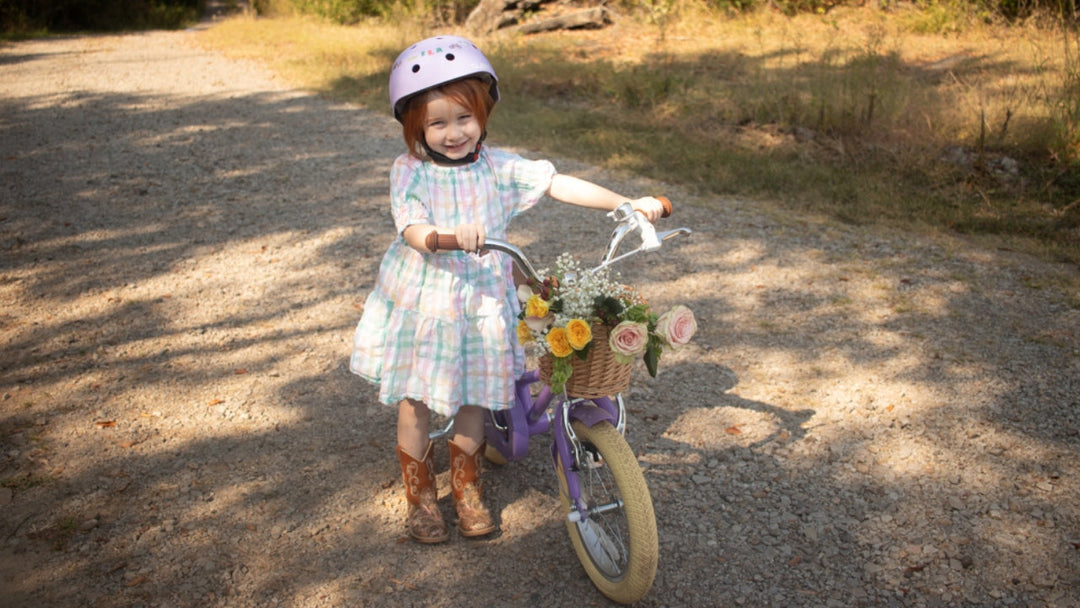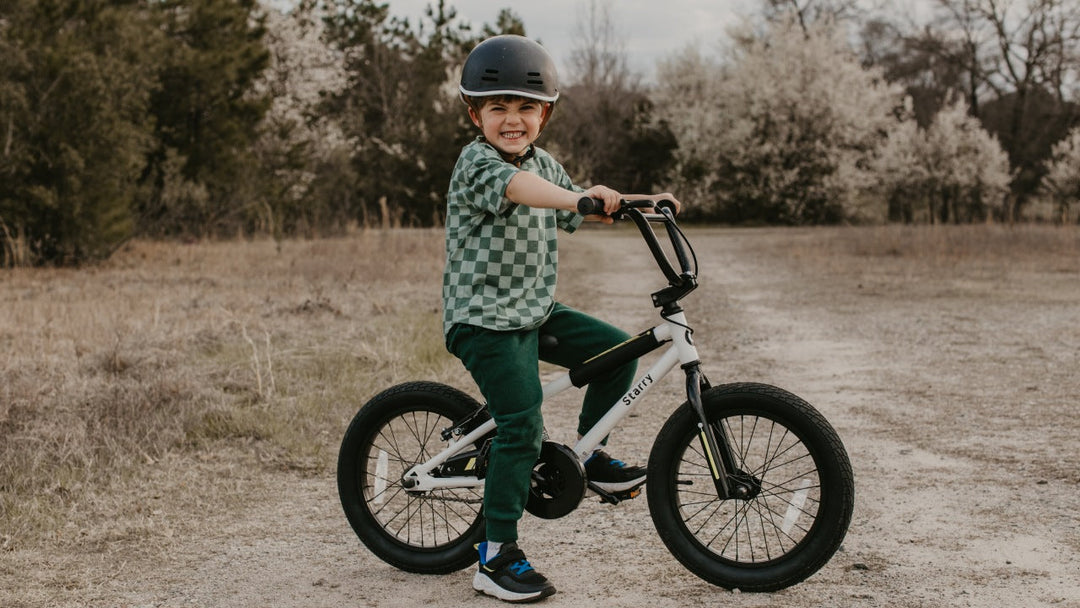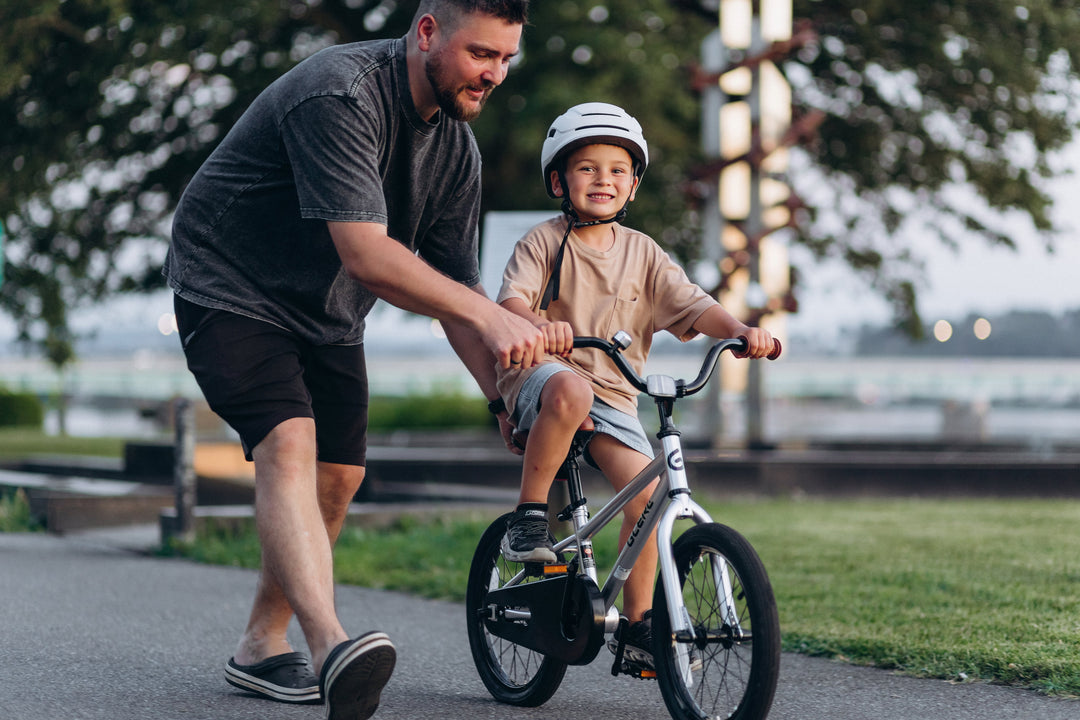When Should a Child Learn to Ride a Bike? Best Age & Safety Tips
A Parent’s Complete Guide
Learning to ride a bike is a huge milestone for children — and a proud moment for parents. But one of the most common questions is: when is the right age to teach a child to ride a bike?
The short answer is: it depends. Factors such as your child’s age, physical development, confidence, and the type of kids bike you choose all play a role. In this complete guide, you’ll learn about the best age to start biking, the key signs of readiness, bike safety tips, and how to help your child learn to ride confidently.

🚲 What’s the Best Age for Kids to Start Riding a Bike?
Most children learn to ride between the ages of 3 and 7 years old, but every child is different. Here is a simple breakdown for parents:
18 months – 3 years old
✅ Best age to introduce a balance bike (no pedals)
✅ Builds core strength, balance, and basic coordination
✅ Focus is on fun, exploration, and freedom

3 – 5 years old
✅ A great time to transition to a bike with training wheels or a first pedal bike
✅ Encourages basic skills in pedaling, steering, and braking
✅ Promotes confidence and independence

5 – 7 years old
✅ Many kids are ready to ride without training wheels
✅ Better sense of balance and spatial awareness
✅ Ideal age for teaching bike safety rules and traffic awareness

Tip: There is no strict rule — some children may start earlier or later, and that is perfectly normal. Confidence and motivation matter more than a specific age.
🔍 How Do You Know If Your Child Is Ready to Learn to Ride?
Besides age, watch for these signs of readiness:
-
They can walk and run with good balance
-
They show interest in bikes or seeing others ride
-
They can follow simple instructions
-
They like scooters, ride-ons, or other balancing toys
If your child feels nervous, a balance bike is a great way to build confidence before transitioning to pedals. Remember, kids bike safety is most important — never rush them.
🛞 What Kind of Bike Is Best for Beginners?
Choosing the right beginner bike can make the learning process smoother and safer:
✅ Balance Bikes (18 months – 5 years)
-
Lightweight, easy to handle
-
Develops balance before adding pedals
-
Encourages natural coordination and confidence
✅ Training Wheel Bikes (3 – 6 years)
-
Adds stability while learning to pedal
-
Serves as a bridge toward independent riding
✅ Pedal Bikes (5+ years)
-
Great for children who already have balance skills
-
Start on flat, open ground for easier practice
Tip: Always match the bike to your child’s height, weight, and confidence level. Using a proper size guide helps avoid frustration and improves kids bike safety.
👨👩👧👦 How to Support Your Child’s Learning Journey
Teaching a child to ride a bike can be emotional and exciting. Here are proven tips to make it a positive experience:
-
Be patient, and avoid comparing your child with others
-
Practice in a safe, open area free of traffic
-
Keep practice sessions short — about 15–20 minutes
-
Always wear a properly fitted helmet and safety gear
-
Allow your child to progress at their own pace
-
Celebrate small successes and make riding fun
Remember, your encouragement and positive attitude are essential to build their confidence. A happy child is much more likely to keep practicing.
⭐ Final Thoughts: Every Child Learns at Their Own Pace
There is no perfect age to learn to ride a bike. The best time is when your child shows interest, has developed enough coordination, and feels ready to try. With the right beginner bike, safe practice environment, and your gentle support, they will soon enjoy the joy of riding with confidence and independence.
If you are looking for kids bike recommendations, be sure to choose models that match your child’s size, skill level, and personal style. Investing in the right bike is one of the best ways to help them enjoy the outdoors, build balance skills, and stay active for life.

🚴Ready to Get Rolling?
Check out our selection of kids bikes designed to make learning to ride safe, fun, and memorable — trusted by parents and loved by children.




